Search Result
Results for "
potentiation
" in MedChemExpress (MCE) Product Catalog:
6
Isotope-Labeled Compounds
| Cat. No. |
Product Name |
Target |
Research Areas |
Chemical Structure |
-
- HY-13058B
-
|
|
mGluR
|
Neurological Disease
|
|
(R)-ADX-47273 is a potent mGluR5 positive allosteric modulator, with an EC50 of 168 nM for potentiation .
|
-
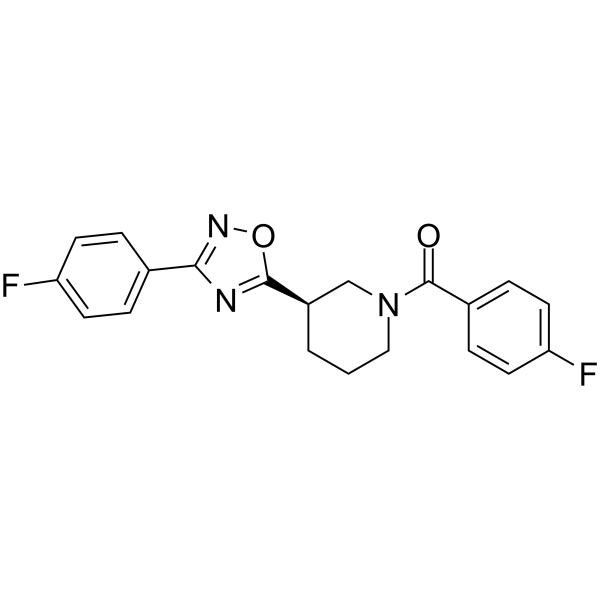
-
- HY-103570
-
|
|
mGluR
|
Neurological Disease
|
|
MCPG is a carboxylic phenyl glycine. MCPG can block metabotropic glutamate receptor (mGluR)(HY-15129) and has antagonistic activity of mGluR subtype. MCPG can be used to study the induction and maintenance of long-term potentiation (LTP) .
|
-

-
- HY-N0403
-
|
|
Apoptosis
|
Inflammation/Immunology
|
|
2,3,4',5-Tetrahydroxystilbene 2-O-β-D-glucoside (TSG) is an active product that can be extracted from Polygonum multiflorum Thunb. TSG has anti-inflammatory, antioxidative, anti-atherosclerotic, anti-apoptotic, and free radical scavenging activities, TSG is also indicated to facilitate long-term potentiation and learning and memory in both normal and pathological conditions .
|
-
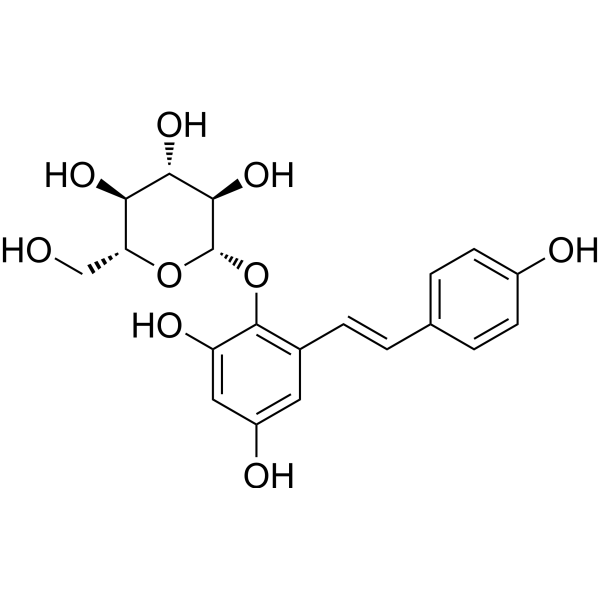
-
- HY-116143
-
|
|
MAGL
|
Metabolic Disease
|
|
SAR127303 is an orally active, selective, competitive monoacylglycerol lipase (MAGL) covalent inhibitor with IC50s of 3.8 nM and 29 nM for mouse and human MAGL, respectively. SAR127303 potently elevates hippocampal levels of 2-AG in mice. SAR127303 decreased long term potentiation (LTP) of CA1 synaptic transmission and acetylcholine release in the hippocampus. SAR127303 produces antinociceptive effects in assays of inflammatory and visceral pain. SAR127303 slows down epileptogenesis .
|
-

-
- HY-103495
-
-
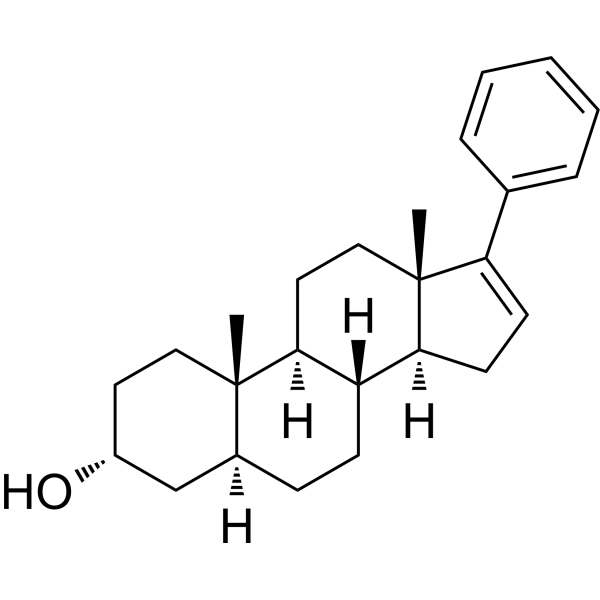
-
- HY-145440
-
|
|
Bacterial
|
Infection
|
|
Colistin adjuvant-2 is a colistin adjuvant, shows increased colistin potentiation activity against Gram-negative bacteria .
|
-

-
- HY-123782
-
|
|
Neprilysin
|
Metabolic Disease
|
|
(Rac)-UK-414495 (example 7) is a potent neutral endopeptidase (NEP) inhibitor. (Rac)-UK-414495 causes potentiation of cAMP in the sexual genitalia of the female .
|
-
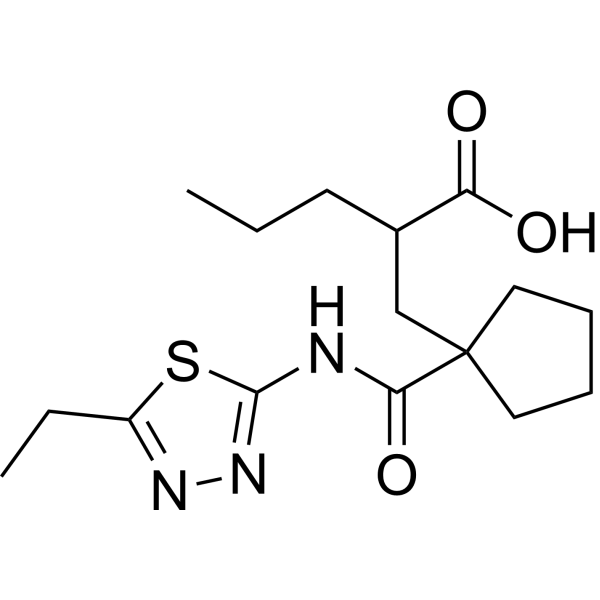
-
- HY-N2922
-
|
|
Amyloid-β
|
Neurological Disease
|
|
β-Amyrin, an ingredient of Celastrus hindsii, blocks amyloid β (Aβ)-induced long-term potentiation (LTP) impairment. β-amyrin is a promising candidate of treatment for AD .
|
-

-
- HY-107683
-
|
|
nAChR
|
Neurological Disease
|
|
LY-2087101 is an allosteric potentiator of α7 nAChRs. LY-2087101 causes potentiation of agonist-evoked α7 responses by binding within the nAChR transmembrane region .
|
-
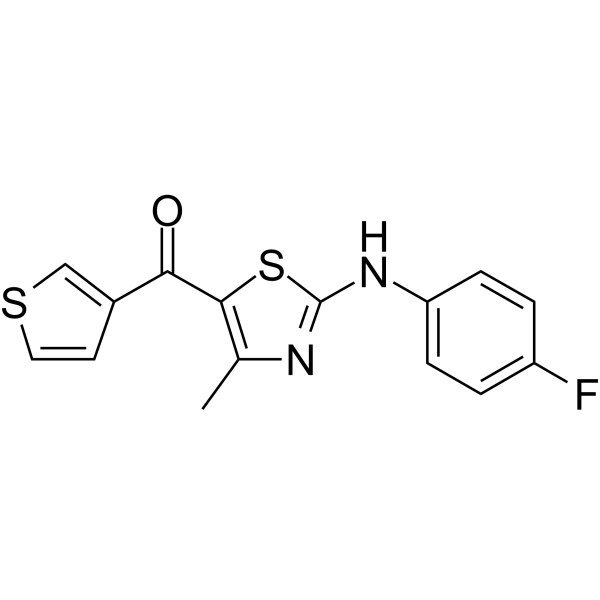
-
- HY-I0096
-
|
|
Endogenous Metabolite
iGluR
|
Neurological Disease
|
|
Indole-2-carboxylic acid is a strong inhibitor of lipid peroxidation. Indole-2-carboxylic acid (I2CA) specifically and competitively inhibits the potentiation by glycine of NMDA-gated current .
|
-
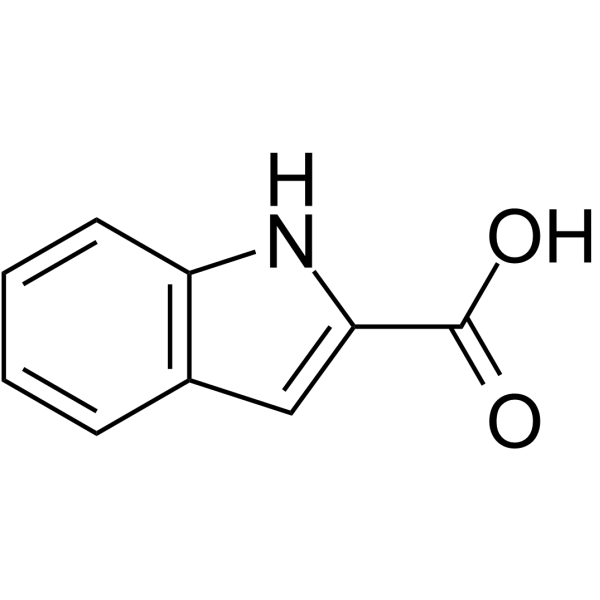
-
- HY-145439
-
|
|
Bacterial
NF-κB
|
Infection
|
|
Colistin adjuvant-1 is a colistin adjuvant, shows increased colistin potentiation activity against Gram-negative bacteria. Colistin adjuvant-1 inhibits NF-κB with an IC50 of 0.209 μM .
|
-
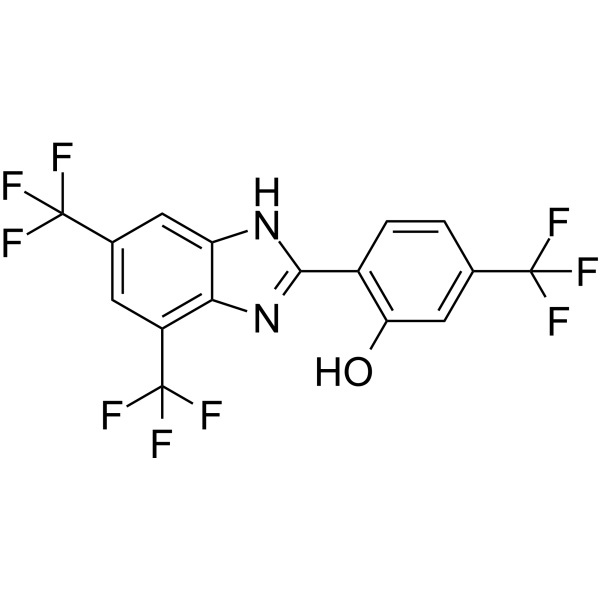
-
- HY-13058
-
|
|
mGluR
|
Neurological Disease
|
|
ADX-47273 is a potent, selective and brain-penetrant mGluR5 positive allosteric modulator (PAM), with an EC50 of 0.17 μM for potentiation of glutamate (50 nM) response. ADX-47273 has antipsychotic and procognitive activities .
|
-
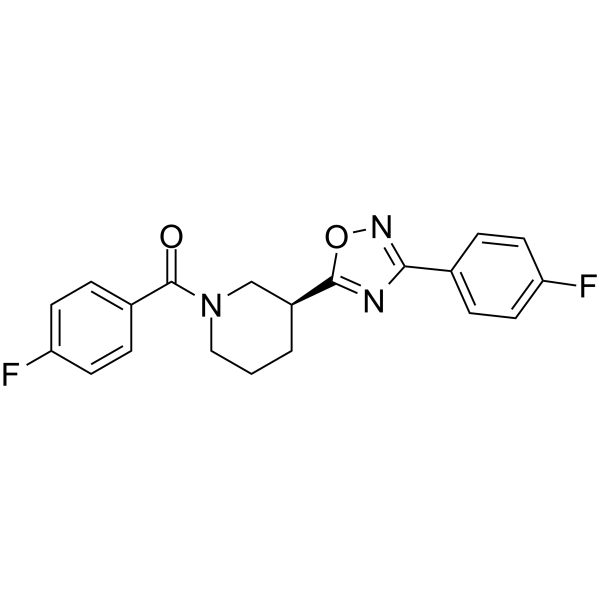
-
- HY-100372
-
|
(RS)-ECPG
|
mGluR
|
Neurological Disease
|
|
E4CPG ((RS)-ECPG) is a Group I/Group II metabotropic glutamate receptor (mGluR) antagonist. E4CPG can inhibit the paired-pulse ratio of monosynaptic inhibitory postsynaptic currents (IPSC) potentiation .
|
-
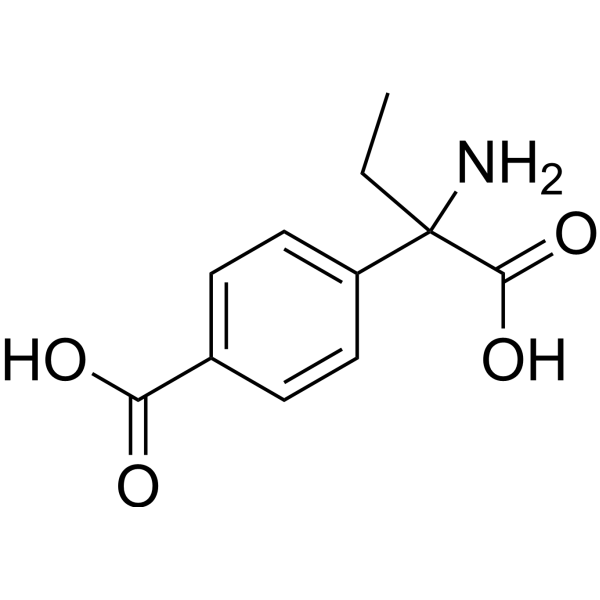
-
- HY-101165
-
|
|
|
|
|
Cyclothiazide, a positive allosteric modulator of AMPA receptors, is used frequently to block the desensitization of both native and heterologously expressed AMPA receptors. Cyclothiazide is known to produce a fast inhibition of AMPA receptor desensitization and a much slower potentiation of the AMPA current .
|
-
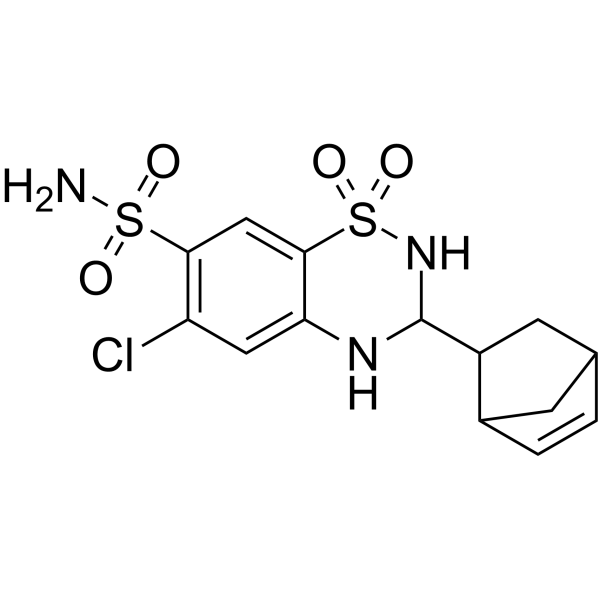
-
- HY-I1070
-
|
(R)-Isoleucine
|
Others
|
Neurological Disease
|
|
D-Isoleucine ((R)-Isoleucine), an isoleucine stereoisomer, is a selective activator of Asc-1 antiporter, which enhances long-term potentiation at the hippocampal CA1-CA3 via release of endogenous D-serine .
|
-
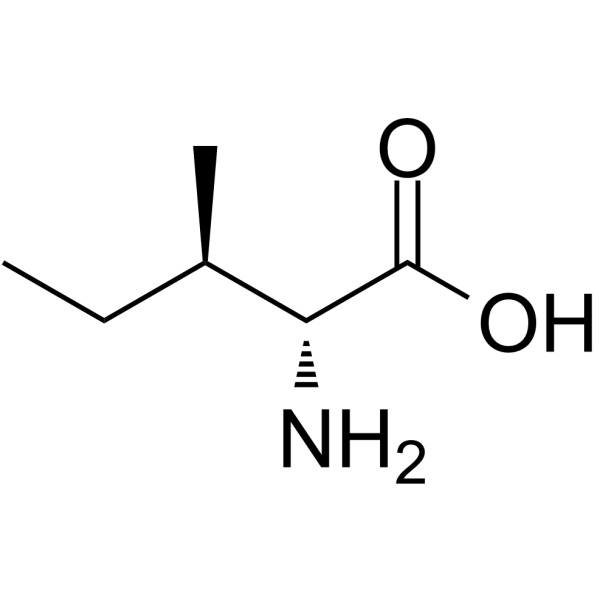
-
- HY-14330
-
|
|
Dopamine Receptor
|
Neurological Disease
|
|
ABT-724 is a potent and highly selective dopamine D4 receptor agonist with an EC50 of 12.4 nM for human dopamine D4 receptor. ABT-724 is a potent partial agonist at the rat D4 (EC50 of 14.3 nM) and the ferret D4 receptor (EC50 of 23.2 nM). ABT-724 has no effect on dopamine D1, D2, D3, or D5 receptors. ABT-724 could be useful for the treatment of erectile dysfunction and has favorable side-effect profile .
|
-
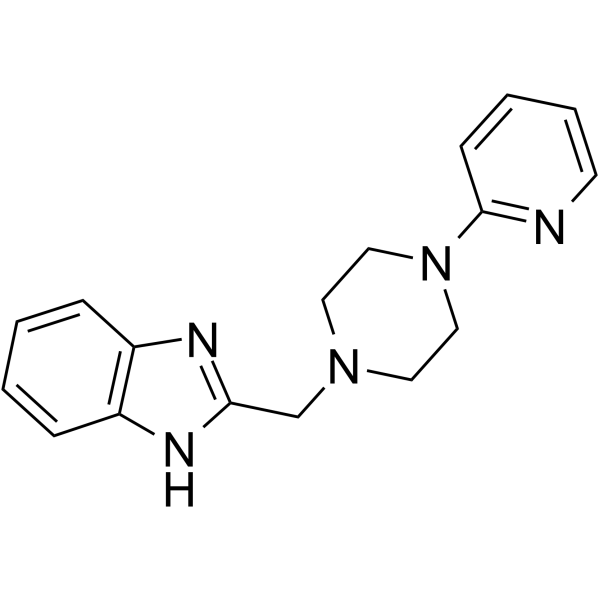
-
- HY-103409
-
|
|
Dopamine Receptor
|
Neurological Disease
|
|
ABT-724 trihydrochloride is a potent and highly selective dopamine D4 receptor agonist with an EC50 of 12.4 nM for human dopamine D4 receptor. ABT-724 trihydrochloride is a potent partial agonist at the rat D4 (EC50 of 14.3 nM) and the ferret D4 receptor (EC50 of 23.2 nM), and has no effect on dopamine D1, D2, D3, or D5 receptors. ABT-724 trihydrochloride could be useful for the treatment of erectile dysfunction and has favorable side-effect profile .
|
-

-
- HY-Y0378
-
|
(R)-Leucine
|
|
|
|
D-Leucine is a more potent anti-seizure agent than L-leucine. D-leucine potently terminates seizures even after the onset of seizure activity. D-leucine, but not L-leucine, reduces long-term potentiation but had no effect on basal synaptic transmission in vitro .
|
-
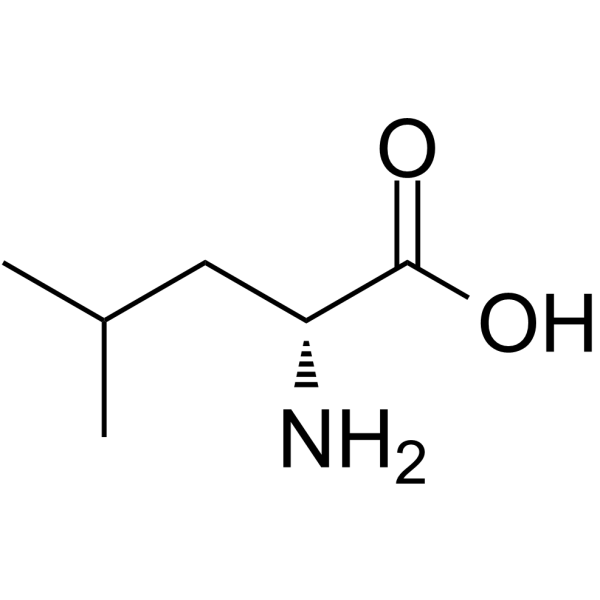
-
- HY-101037
-
|
N-Methylglycine; Sarcosin
|
|
|
|
Sarcosine (N-Methylglycine), an endogenous amino acid, is a competitive glycine transporter type I (GlyT1) inhibitor and N-methyl-D-aspartate (NMDA) receptor co-agonist. Sarcosine increases the glycine concentration, resulting in an indirect potentiation of the NMDA receptor. Sarcosine is commonly used for the research of schizophrenia .
|
-
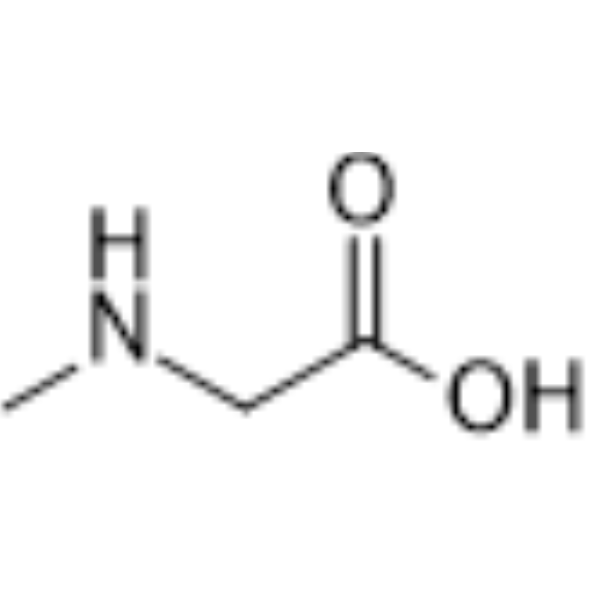
-
- HY-N7119
-
|
|
Others
|
Inflammation/Immunology
|
|
Cimicifugoside, a triterpenoid isolated from Cimicifuga simplex, is a novel specific nucleoside transport inhibitor that displays synergistic potentiation of methotrexate cytotoxicity . Cimicifugoside shows immunosuppressive activity, which is preferentially directed toward B-cell function with larger doses being required for suppression of T-cell function .
|
-
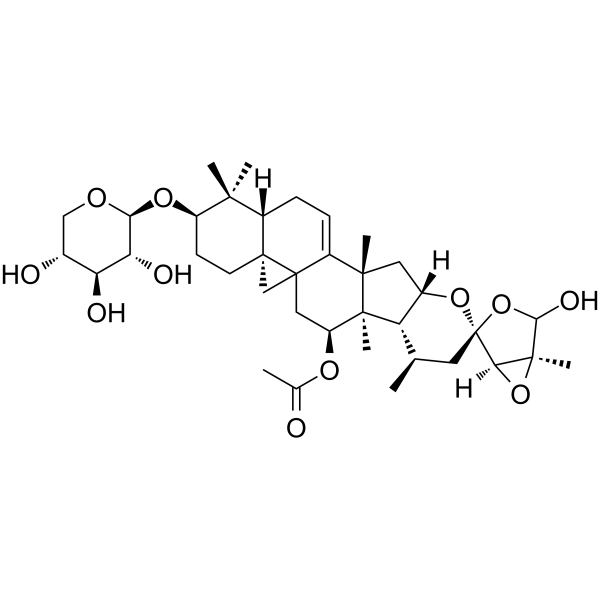
-
- HY-13017S
-
|
VX-770-d9
|
CFTR
|
Cancer
|
|
Ivacaftor-d9 is a potent CFTR modulator and exhibits an EC50 value of 255 nM for CFTR potentiation in G551D/F508del HBE Cells. Ivacaftor-D9 acts as an orally active and improved deuterated Ivacaftor analog for cystic fibrosis research[1].
|
-

-
- HY-13017S1
-
|
VX-770-d19
|
CFTR
Autophagy
|
Endocrinology
|
|
Ivacaftor-d9 is a potent CFTR modulator and exhibits an EC50 value of 255 nM for CFTR potentiation in G551D/F508del HBE Cells. Ivacaftor-D9 acts as an orally active and improved deuterated Ivacaftor analog for cystic fibrosis research .
|
-

-
- HY-101037S1
-
|
N-Methylglycine-d3; Sarcosin-d3
|
Isotope-Labeled Compounds
Endogenous Metabolite
GlyT
|
Cancer
|
|
Sarcosine-d3 is the deuterium labeled Sarcosine. Sarcosine (N-Methylglycine), an endogenous amino acid, is a competitive glycine transporter type I (GlyT1) inhibitor and N-methyl-D-aspartate (NMDA) receptor co-agonist. Sarcosine increases the glycine concentration, resulting in an indirect potentiation of the NMDA receptor. Sarcosine is commonly used for the research of schizophrenia[1][2].
|
-

-
- HY-I0096S
-
-
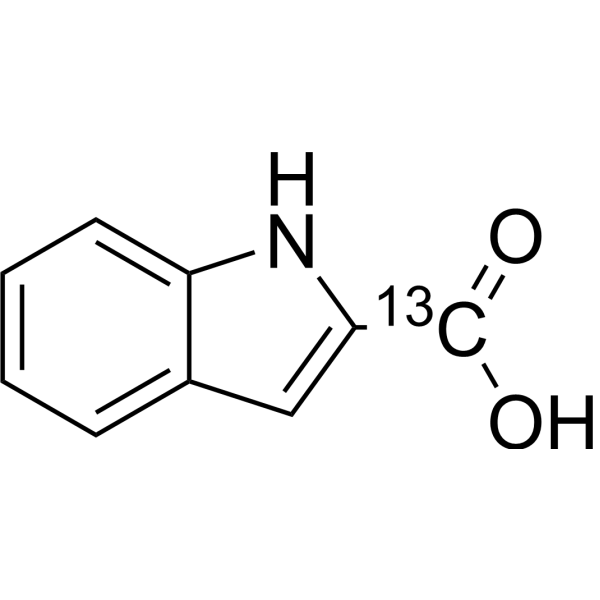
-
- HY-Y0378S
-
|
(R)-Leucine-d10
|
Isotope-Labeled Compounds
Endogenous Metabolite
|
|
|
D-Leucine-d10 is the deuterium labeled D-Leucine. D-Leucine is a more potent anti-seizure agent than L-leucine. D-leucine potently terminates seizures even after the onset of seizure activity. D-leucine, but not L-leucine, reduces long-term potentiation but had no effect on basal synaptic transmission in vitro[1].
|
-
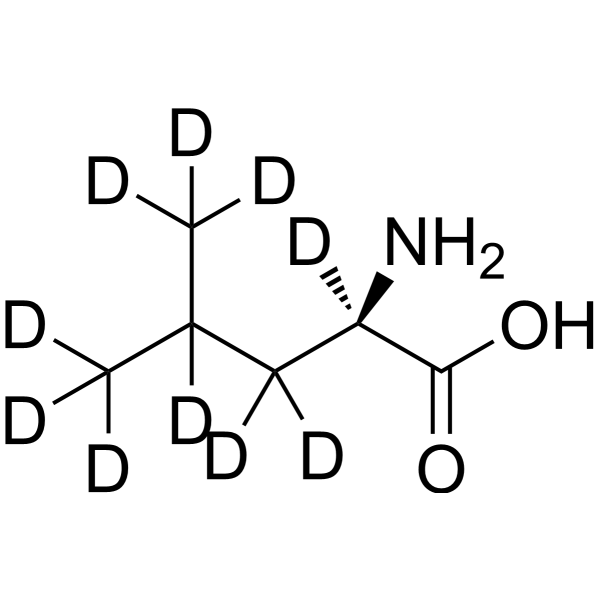
-
- HY-109008
-
|
OP0595 free acid
|
Beta-lactamase
Bacterial
|
Infection
|
|
Nacubactam (OP0595 free acid) is a potent non-β-lactam-β-lactamase inhibitor with activity against class A and class C β-lactamases. Nacubactam (OP0595 free acid) acts as a penicillin binding protein (PBP) 2-active antibacterial, and gives β-lactamase-independent potentiation of β-lactams targeting other PBPs .
|
-
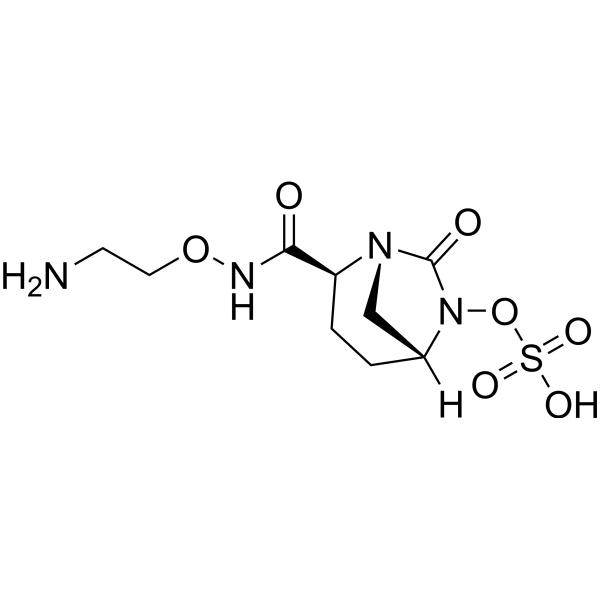
-
- HY-101037S
-
|
N-Methylglycine-15N; Sarcosin-15N
|
Endogenous Metabolite
GlyT
|
Cancer
|
|
Sarcosine- 15N is the 15N-labeled Sarcosine. Sarcosine (N-Methylglycine), an endogenous amino acid, is a competitive glycine transporter type I (GlyT1) inhibitor and N-methyl-D-aspartate (NMDA) receptor co-agonist. Sarcosine increases the glycine concentration, resulting in an indirect potentiation of the NMDA receptor. Sarcosine is commonly used for the research of schizophrenia[1][2].
|
-

-
- HY-148250
-
|
|
iGluR
|
Neurological Disease
|
|
TP-050 is a potent, orally active and selective NMDAR agonist with an EC50 value of 0.51 µM and 9.6 µM for GluN2A and GluN2D, respecticely. TP-050 can cross the blood-brain barrier (BBB). TP-050 induces hippocampal long-term (LPT) potentiation enhancemen and enhances neuronal signal transmission .
|
-
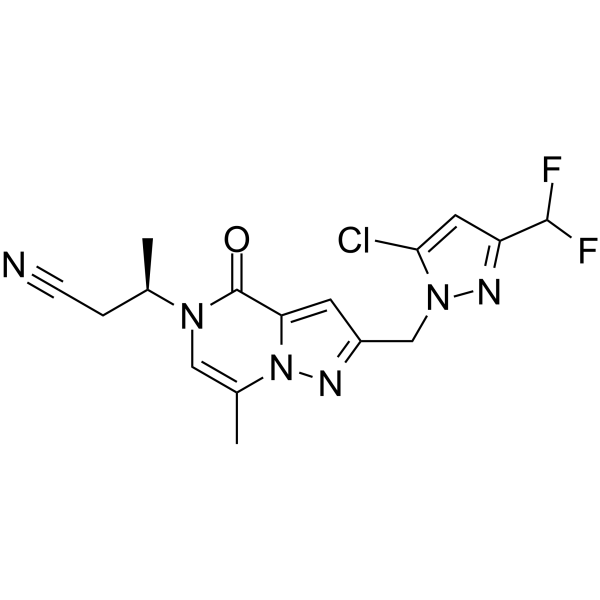
-
- HY-120645
-
|
|
Opioid Receptor
|
Neurological Disease
|
|
BMS-986122 is a selective, potent positive allosteric modulator of the mu-opioid receptor (µ-OR). BMS-986122 shows potentiation of orthosteric agonist-mediated β-arrestin recruitment, adenylyl cyclase inhibition, and G protein activation. BMS-986122 potentiates DAMGO-mediated [ 35S]GTPγS binding in mouse brain membranes .
|
-

-
- HY-130553
-
|
β-NAAG; β-N-Acetylaspartylglutamic acid
|
Aminopeptidase
mGluR
|
Neurological Disease
|
|
β-Spaglumic acid (β-NAAG) is a competitive NAAG peptidase inhibitor (Ki=1 µM) that protects spinal cord neurons from excitotoxicity and hypoxic damage. β-Spaglumic acid is also a selective mGluR3 antagonist (mGluR3 receptor functions to regulate activity-dependent synaptic potentiation in the hippocampus). β-Spaglumic acid can be used in neuroprotection-related studies .
|
-

-
- HY-155687
-
|
|
Phosphodiesterase (PDE)
|
Neurological Disease
|
|
PDE5-IN-10 (compound 4b) is a potent PDE5 inhibitor with an IC50 of 20 nM. PDE5-IN-10 improves in vitro microsomal stability (t1/2 = 44.6 min) as well as excellent efficacy in restoring long-term potentiation. PDE5-IN-10 can be used for Alzheimer’s disease (AD) research .
|
-
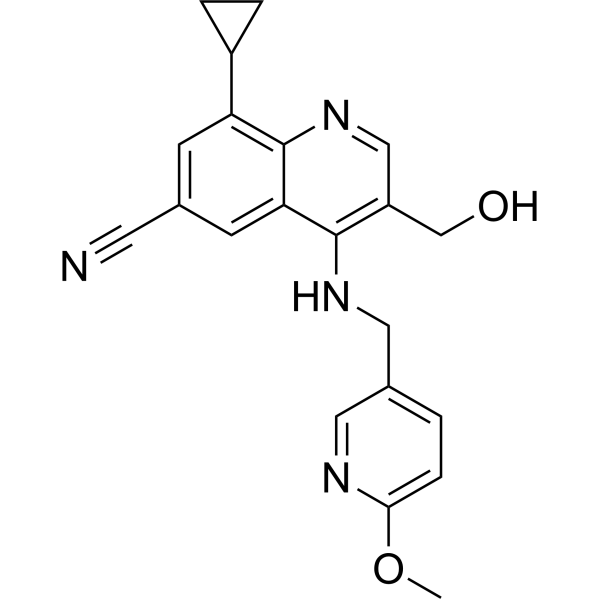
-
- HY-19411
-
|
|
nAChR
|
Neurological Disease
|
|
SSR180711 hydrochloride is an orally active, selective and reversible α7 acetylcholine nicotinic receptor (n-AChRs) partial agonist. SSR180711 hydrochloride can act on rat α7 n-AChR (Ki=22 nM; IC50=30 nM) and human α7 n-AChR (Ki=14 nM; IC50=18 nM). SSR180711 hydrochloride increases glutamatergic neurotransmission, ACh release and long-term potentiation (LTP) in the hippocampus .
|
-
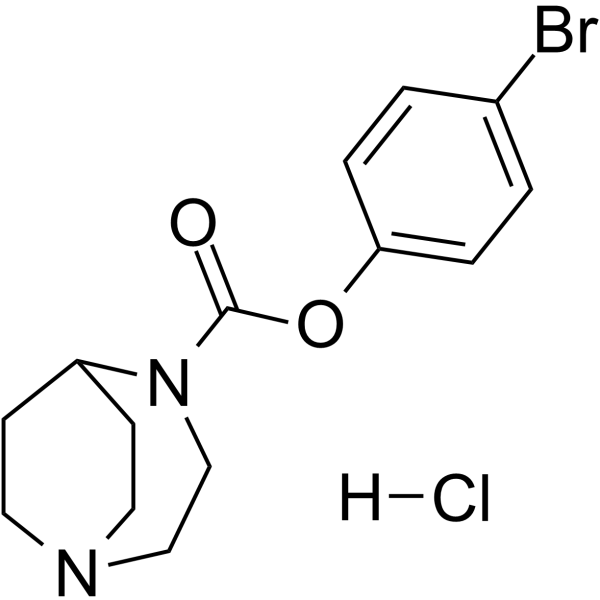
-
- HY-107601
-
|
ACET
|
iGluR
|
Neurological Disease
|
|
UBP316 (ACET) is a highly potent and selective kainate receptor GluK1 (GluR5) antagonist, with a Kb value of 1.4 nM. UBP316 is effective at blocking the depression of both field excitatory postsynaptic potentials (fEPSPs) and monosynaptically-evoked GABAergic transmission induced by ATPA, a GluK1 selective agonist .
|
-
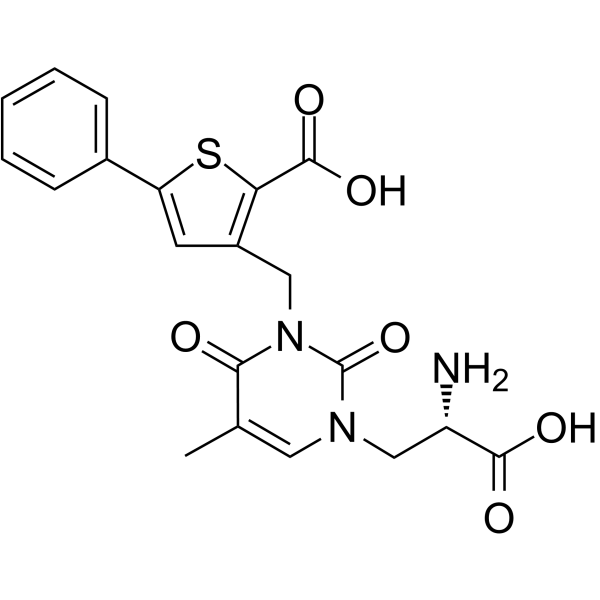
-
- HY-156104
-
|
|
PROTACs
CaMK
|
Neurological Disease
|
|
CaMKIIα-PHOTAC is a photochemically targeted chimera (PHOTAC) targeting Ca2+/calmodulin-dependent protein kinase II α (CaMKIIα). Molecules such as PHOTAC can catalyze the ubiquitination and degradation of target proteins through the endogenous proteasome under specific wavelengths of light. CaMKIIα-PHOTAC reduces synaptic function under light conditions, and it attenuates the intensity of evoked field excitatory postsynaptic potentials in the mouse hippocampus in response to physiological stimuli. CaMKIIα-PHOTAC plays a critical role in maintaining long-term potentiation and memory capacity in subcellular dendritic domains .
|
-
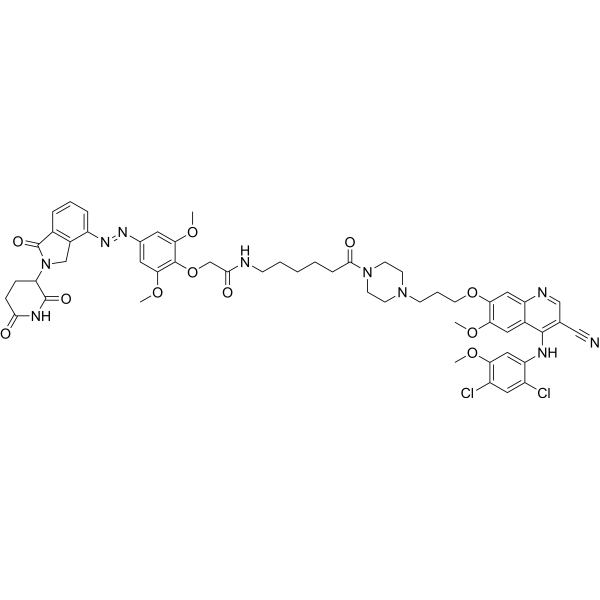
-
- HY-116673
-
|
|
Histone Acetyltransferase
|
Neurological Disease
|
|
TTK21 is an activator of the histone acetyltransferases CBP/p300. TTK21 passes the blood–brain barrier, induces no toxicity, and reaches different parts of the brain when conjugated to glucose-based carbon nanosphere (CSP). TTK21 has beneficial implications for the brain functions of neurogenesis and long-term memory .CSP-TTK21 can ameliorate Aβ-impaired long-term potentiation (LTP). CSP-TTK21 may enhance the transcription of genes that promote synaptic health and cognitive function . CSP-TTK21 is orally effective and leads to improvements in motor functions, histone acetylation dynamics in a spinal injury rat model .
|
-
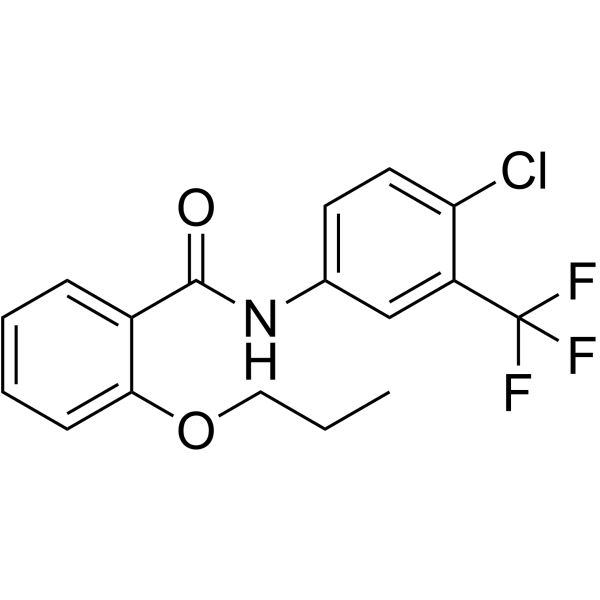
| Cat. No. |
Product Name |
Category |
Target |
Chemical Structure |
| Cat. No. |
Product Name |
Chemical Structure |
-
- HY-13017S
-
|
|
|
Ivacaftor-d9 is a potent CFTR modulator and exhibits an EC50 value of 255 nM for CFTR potentiation in G551D/F508del HBE Cells. Ivacaftor-D9 acts as an orally active and improved deuterated Ivacaftor analog for cystic fibrosis research[1].
|
-

-
- HY-101037S1
-
|
|
|
Sarcosine-d3 is the deuterium labeled Sarcosine. Sarcosine (N-Methylglycine), an endogenous amino acid, is a competitive glycine transporter type I (GlyT1) inhibitor and N-methyl-D-aspartate (NMDA) receptor co-agonist. Sarcosine increases the glycine concentration, resulting in an indirect potentiation of the NMDA receptor. Sarcosine is commonly used for the research of schizophrenia[1][2].
|
-

-
- HY-Y0378S
-
|
|
|
D-Leucine-d10 is the deuterium labeled D-Leucine. D-Leucine is a more potent anti-seizure agent than L-leucine. D-leucine potently terminates seizures even after the onset of seizure activity. D-leucine, but not L-leucine, reduces long-term potentiation but had no effect on basal synaptic transmission in vitro[1].
|
-

-
- HY-13017S1
-
|
|
|
Ivacaftor-d9 is a potent CFTR modulator and exhibits an EC50 value of 255 nM for CFTR potentiation in G551D/F508del HBE Cells. Ivacaftor-D9 acts as an orally active and improved deuterated Ivacaftor analog for cystic fibrosis research .
|
-

-
- HY-I0096S
-
|
|
|
Indole-2-carboxylic acid- 13C is the 13C-labeled Indole-2-carboxylic acid. Indole-2-carboxylic acid is a strong inhibitor of lipid peroxidation. Indole-2-carboxylic acid (I2CA) specifically and competitively inhibits the potentiation by glycine of NMDA-gated current[1][2].
|
-

-
- HY-101037S
-
|
|
|
Sarcosine- 15N is the 15N-labeled Sarcosine. Sarcosine (N-Methylglycine), an endogenous amino acid, is a competitive glycine transporter type I (GlyT1) inhibitor and N-methyl-D-aspartate (NMDA) receptor co-agonist. Sarcosine increases the glycine concentration, resulting in an indirect potentiation of the NMDA receptor. Sarcosine is commonly used for the research of schizophrenia[1][2].
|
-

Your information is safe with us. * Required Fields.
Inquiry Information
- Product Name:
- Cat. No.:
- Quantity:
- MCE Japan Authorized Agent:











































